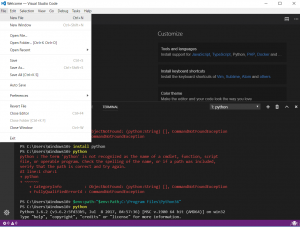Introduction to ECMA Script
Introduction to ECMA Script
As a web or mobile application developer you might already be aware of JavaScript. JavaScript has been a programmer’s favorite and lifesaver when it comes to changing Html on the fly since it runs directly on the browser. Now days, you are hearing a lot on JavaScript and corresponds frameworks that have popped up and wondering where to start with. JavaScript is evolving and is no longer object based language and you can see in new versions you can create classes, interfaces just like Java.
All the core features of JavaScript are defined in a standard widely known as ECMA-262.The ECMA-262 standards are defined in a language called ECMAScript. You should keep track of this language since most of the current programming languages are inheriting lot of features from ECMAScript. JavaScript and Node.js uses all the core features of ECMAScript and adds lot of other features on top of those feature to be as powerful a language.
The current version of ECMAScript at the time of writing the article is known as ES-2015 or ES-6. JavaScript as a language has seen lot of improvement over a course of ECMAScript upgrades. The biggest upgrade came in ES4.0 which apart from other smaller features includes the major ones like a new syntax, modularity, classes support, inheritance support, private access modifier etc.
style="display:block; text-align:center;"
data-ad-format="fluid"
data-ad-layout="in-article"
data-ad-client="ca-pub-5021110436373536"
data-ad-slot="9215486331">
There has been lot of improvements since then and if you want to learn any of the modern-day frameworks like Angular.Js, React.Js or Vue.js it’s a must to get started with learning ECMAScript.
In this article series, I will try to explain new features of ECMAScript and also will try to refer which features are adopted in which programming language.
Some of the features of ES-6 that we are going to discuss are:
• Scoped Variables (let vs var keyword)
• Arrow functions
• Constant Variables
• Default parameters
• Spread operators
• Rest Parameters
• Template Literals
• Destructuring
• Modules
• Classes
• Symbols
• Iterators
• Generators
